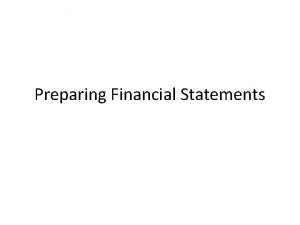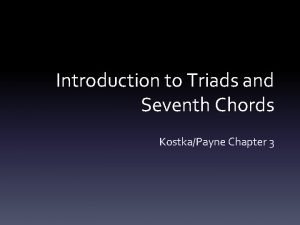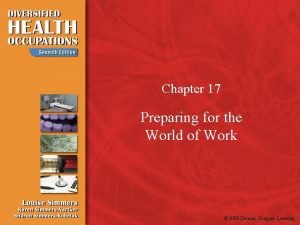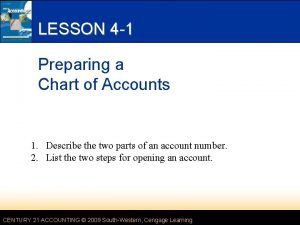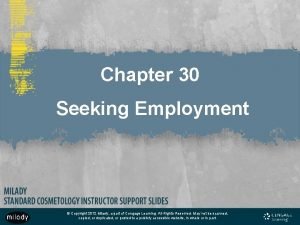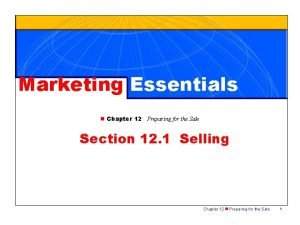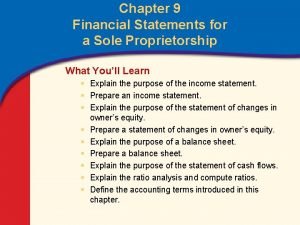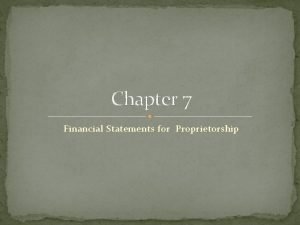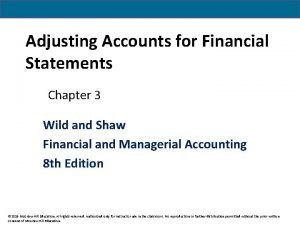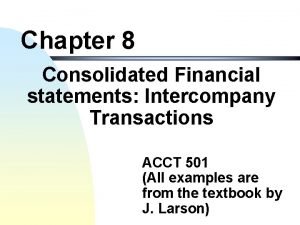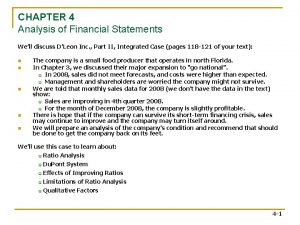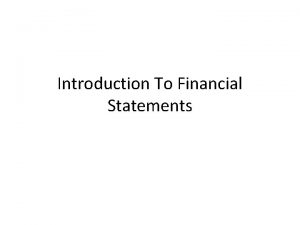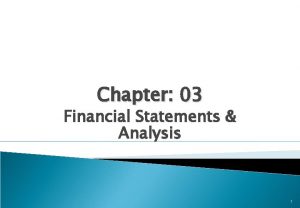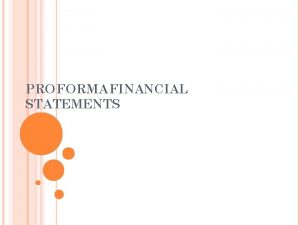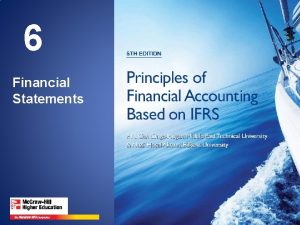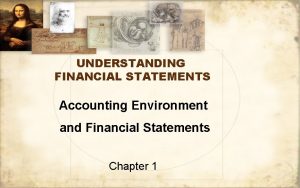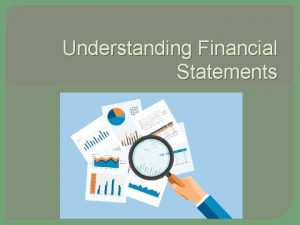Chapter 9 Financial Statements Preparing Financial Statements Seventh
















- Slides: 16

Chapter 9 Financial Statements

Preparing Financial Statements Seventh Step in the Accounting Cycle: provide information for business decisions owners managers investors prepared in ink or on computer

financial statements sole proprietorship 1. 2. income statement shows net income or net loss for period statement of changes in owner’s equity summarizes changes in owner’s capital as result of business transactions during period 3. 4. balance sheet reports on assets and financial claims to those assets (A=L+OE) statement of cash flows

The Income Statement shows details about profitability income made or loss incurred in period Timeframe: for a specific period of time Source of Information: Income Statement Section of the Work Sheet


Statement of Changes in Owner’s Equity tracks increase/decrease in owner’s equity financial claims to assets of business


Stmt of Chng in OE Timeframe: for a specific period Sources of Information: Capital Account in General Ledger beginning capital and investments during period Income Statement net income of net loss Work Sheet withdrawals by owner

Trial Balance Capital – Investments During the Period -----------------------Beginning Capital Need to know ending capital in order to complete the next financial statement: the Balance Sheet.

Balance Sheet report of balances in all permanent accounts assets, liabilities, and capital represents basic accounting equation; A=L+OE


Timeframe: as of a specific date Sources of Information: Balance Sheet Section of the Work Sheet Statement of Changes in OE. Report Form: Account classifications are shown one under the other with section titles centered

Ratio Analysis comparison of two amounts on financial statement evaluation of relationship between these amounts Used to determine financial strength activity debt-paying ability

Return on Sales: Determine the portion of each sales dollar that represents profit. Net Income / Sales = Return on Sales

Current Ratio: Relationship between current assets and current liabilities. Current Assets / Current Liabilities = Current Ratio

Quick Ratio: The relationship between short term assets and current liabilities. Cash and Receivables / Current Liabilities = Quick Ratio
 Petty cash in income statement
Petty cash in income statement Major 2
Major 2 Chapter 18.1 preparing for the world of work
Chapter 18.1 preparing for the world of work Chapter 17:1 developing job-keeping skills
Chapter 17:1 developing job-keeping skills Chapter 18 preparing for the world of work
Chapter 18 preparing for the world of work Chapter 15 preparing for careers
Chapter 15 preparing for careers Part two preparing a chart of accounts chapter 4 test a
Part two preparing a chart of accounts chapter 4 test a Chapter 1 preparing your path to success
Chapter 1 preparing your path to success Chapter 30 seeking employment milady
Chapter 30 seeking employment milady Chapter 12 preparing for the sale
Chapter 12 preparing for the sale Chapter 3 analysis of financial statements
Chapter 3 analysis of financial statements The expense recognition principle aims to record
The expense recognition principle aims to record Chapter 9 financial statements for a sole proprietorship
Chapter 9 financial statements for a sole proprietorship Sole proprietorship financial statements
Sole proprietorship financial statements Adjusting accounts for financial statements chapter 3
Adjusting accounts for financial statements chapter 3 Chapter 8 separate financial statements
Chapter 8 separate financial statements Chapter 4 analysis of financial statements
Chapter 4 analysis of financial statements
